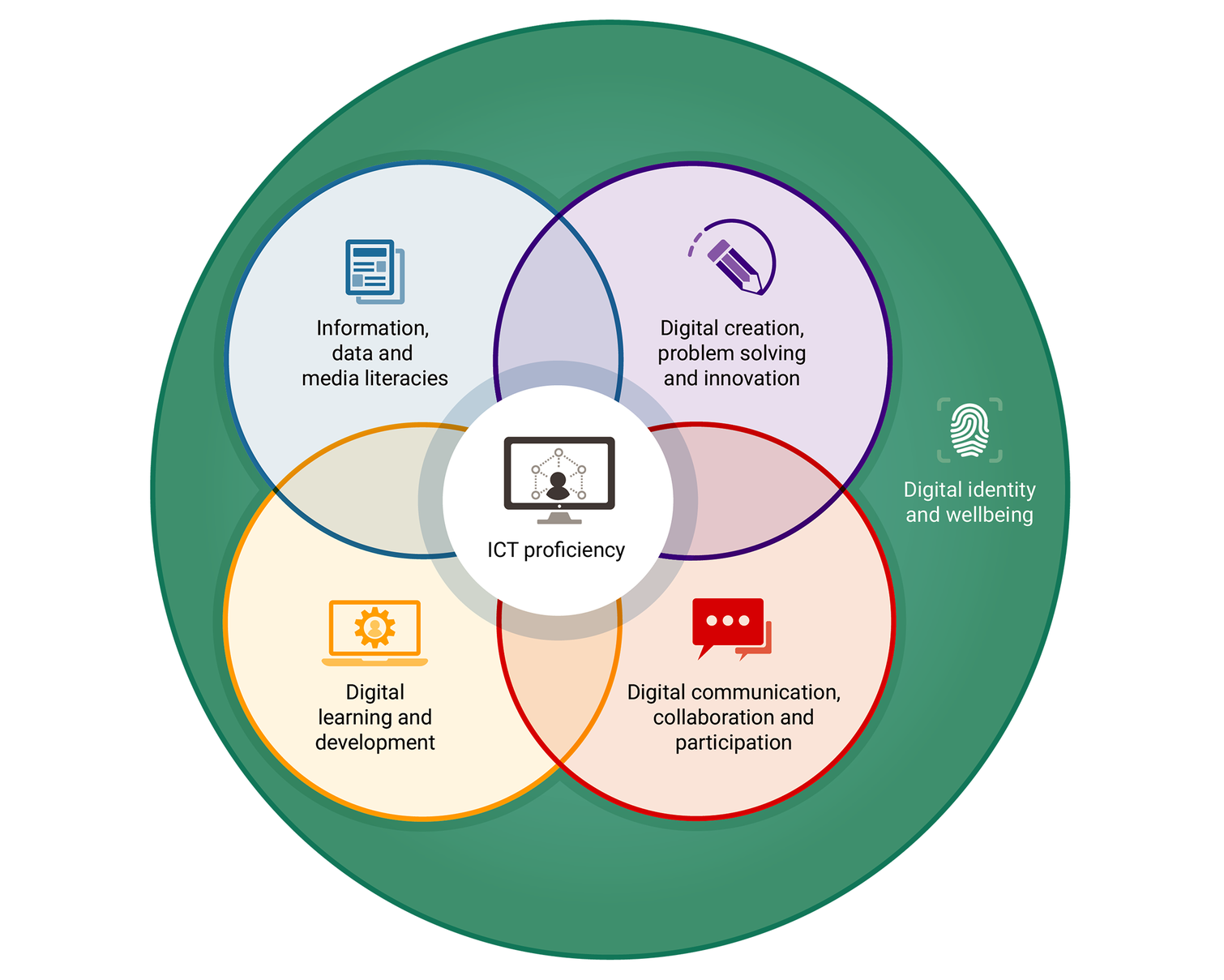Individual digital capabilities
The following short animation from the University of Derby explains why it is important for people to think about developing their digital capabilities (download animation transcript) (pdf).
What it means to be digitally capable will vary for each person. It will depend on the requirements of their role, their subject specialism, career choice, personal and other contextual factors. Our Digital capabilities framework looks more closely at what this means for individuals.
The six elements of this framework are:
- Digital proficiency and productivity (functional skills)
- Information, data and media literacies (critical use)
- Digital creation, problem solving and innovation (creative production)
- Digital communication, collaboration and participation (participation)
- Digital learning and development (development)
- Digital identity and wellbeing (self-actualising)

Role profiles
In addition to our overall digital capabilities framework: the six elements defined, and to recognise the different needs and ambitions of individuals, we have developed a series of role profiles for roles typically found in colleges and universities. These role profiles are used in the customised versions of our discovery tool. They provide a useful tool for reviewing skills individually or across teams.
See our role profiles for:
- Teacher profile (HE)
- Teacher profile (FE and skills)
- Learners
- Researchers
- Research manager/research professional staff in higher education
- Learning technologists
- Library and information professionals
- Leaders
- Professional services staff in education
Find out more
See also our briefing papers for senior leaders and practitioners on digital wellbeing
Our series of narrated PowerPoint presentations provides a more detailed overview of the digital capabilities framework for individuals, how it came about, how it has evolved, how it is structured and our focus on how digital capabilities relate to educational settings.
